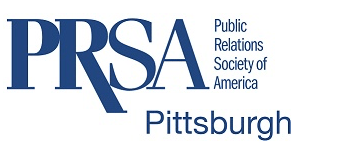In Defense of Truth: Public relations professionals must lead by example when it comes to mis- and disinformation
By Bob Oltmanns, APR
Former PRSA Pittsburgh president
It was probably Winston Churchill who said, “a lie will travel around the world and back again before the truth can put its pants on.”
And remember that Churchill died long before cable TV and the internet, which means that in 2021, things are much, much worse.
Whether fueled by misinformation — defined as false, inaccurate, or misleading information communicated regardless of an intention to deceive — or disinformation, which is deliberate deception, the use of either type of communication to gain an advantage are not new ideas. In “The Art of War,” written in the fifth century B.C., Chinese general Sun Tzu noted that “all warfare is based on deception.” And today, America is painfully divided to a degree not seen since the Civil War, caused in part by inaccurate information.
And let’s be clear — this divisiveness is not about who is on the right side of the facts. It’s about the blurring of the lines between opinion and fact. There are plenty of causes for this.
One is the repeal of the Fairness Doctrine in 1987, which lifted the requirement that holders of broadcast licenses present controversial issues of public importance with balance and honesty.
Another is the rise and ubiquitous presence of social media in virtually every aspect of American life. In the 1960s and ‘70s, there were only three television networks, and CBS veteran anchor Walter Cronkite was voted the “most trusted man in America.” A former wartime correspondent and UPI reporter, Cronkite was obsessed with accuracy and detail. Sadly, accuracy has been gradually eroding under the pressure of ratings, clicks and analytics.
Now, a Pew Research Center study finds that over half of Americans look to social media to get their news, most frequently on Facebook, which makes inadequate provisions for editing, fact-checking, or even, in many instances, truth or accuracy.
So this is where we are now.
The RAND Corporation has been examining the systemic causes and effects of mis/disinformation in American society. In its 2018 report, “Truth Decay,” RAND points to four trends that have led to the deterioration of accuracy and balance in the dissemination of information:
- Increasing disagreement about facts
- Blurring of the line between opinion and fact
- The increasing volume and influence of opinion over fact
- Declining trust in formerly respected sources of facts
Regardless of where you fall on the political or ideological spectrum, it’s hard to argue with RAND’s analysis. Perhaps even more troubling, however, is the realization that these trends have entrenched themselves in democratic societies, not just in the U.S. but around the world wherever free speech and a plurality of ideas is essential. Much like cancer infects our vital organs, misinformation thrives where free speech is inviolate.
But here’s where this comes back to us in the PR profession.
While there’s not much consensus around potential solutions to the problem of systemic mis/disinformation, the RAND study offers two strategies that point to our role in all this:
- Pursue changes in the way information is disseminated, including journalism that better separates fact and opinion and facilitates more accessible science communication.
- Identify tools and governance mechanisms to address the spread of online disinformation.
Insofar as the public relations profession works extensively with both journalists and social media, we have a vital role to play in combating mis- and disinformation.
PRSA’s “Voices4Everyone” campaign is our profession’s first step in that direction. In our capacity as advocates that serve the public interest with honesty and the highest standards of accuracy and truth, we need to be more than passive supporters of these values. Our obligation to be fanatics for truth and accuracy in our roles as advocates must now be a clarion call.
It’s not enough — or even fair — to stand on the sidelines and demand that journalists and social media fight the uphill battle in the war against mis- and disinformation alone. Public relations professionals, after all, are the suppliers and brokers of content, ideas, messages and imagery that ultimately becomes the narrative behind the daily news and social media conversations of our time.
Like it or not, this is our fight, too. We’re in this neck-deep, and if you’re still not convinced, think long and hard about how much inaccurate information is contained in press releases and social media campaigns every day. Intentional or well-meaning, it happens. But it can’t continue. Our profession, if it is to remain an essential business function and valued partner to the fourth estate, must look within itself to ensure that we don’t exacerbate the problem. Rather, we need to be part of the solution.
It’s our job — in whatever organization we represent — to “preserve the integrity of the process of communication … be honest and accurate in all communications … and correct erroneous communications” for which we are responsible. This is a time for us to step up to the PRSA Code of Ethics and lead by example.
Failure to seize this moment in history and help bring about meaningful progress in this struggle will assign the public relations profession to the role of an irrelevant by-stander when the First Amendment needed us most.
—————
Bob Oltmanns, APR, Fellow PRSA is the president of OPR Group. He is an accredited member of the Public Relations Society of America, the PRSA College of Fellows, the PRSA Counselor’s Academy, and is a member of the PRSA Pittsburgh Chapter Renaissance Hall of Fame. He also served as president of the Pittsburgh Chapter of PRSA in 1995.
Mr. Oltmanns is also a member of the PRSA “Voices4Everyone” initiative, which supports a national conversation to build mutual understanding, trust, and civic engagement through inclusive civil discourse. He is also a member of a regional study group on the Rand Corporation’s “Truth Decay” project, which is examining the diminishing role of facts and analysis in American life.





Leave a Reply
Want to join the discussion?Feel free to contribute!